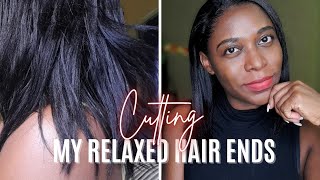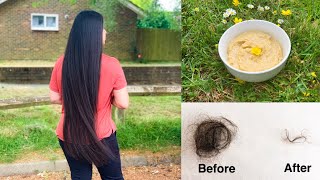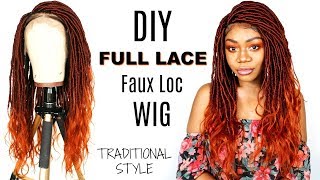Hair Under The Microscope: Types Of Hair Ends Deconstructed

After years or even decades of mistreating your hair and dealing with the problems that came along with it, you finally have your eyes opened to healthy hair journyes and the possibilities that come along with them.
You spend 2 months solid learning almost all there is to know about hair, watching YouTube channels more than regular TV and following every hair blogger you can get a hold of.
You decide to go all militant with your regimen vowing never to go within 50 yards of a blow dryer* or flat iron* again and deep condition religiously.
A year later and your hair is thriving and you are retaining length like it’s going out of style but what’s this? Split ends???
My colorful storytelling notwithstanding, this is actually something that many women go through at some point or other in their hair journeys.
For decades, before information sharing became instantaneous many women of color both natural and relaxed followed the Caucasian version of hair care and as such we had it drilled into our heads that us that heat = split ends. But this is not strictly accurate.
What causes split ends?
While it is factually true that excessive heat usage does in fact cause splits ends, it is not the only cause.
Black hair is structurally different from other hair types having a flatter more oval cross-section as compared to Caucasian or Asian hair.
Our small diameter curls and coils added to the torsion twists that our strands create as they grow makes our hair relatively dry and fragile.
That is to say that even under perfect conditions, a very low manipulation or protective regimen, our hair will still experience more breakage than other hair types.
Now while we have shown over and over that this increased breakage won’t stop you having long healthy hair of your own but there is a little known consequence of this increased breakage. Split ends.
Split ends form when there has been damage to the hair fiber that causes the hair shaft to split into two or more sections. In spite of products on the market that would try to convince you otherwise, the only way to actually treat split ends permanently is to cut them off with a sharp pair of hair shears.
Delaying or just not cutting off split ends leads to further damage of the hair strands and even though the split is unlikely to travel all the way to the base of your hair shaft, they do have the potential to travel a few inches down your shaft. This weakens that portion of hair making it very likely to break off when next manipulated.
Different types of hair ends at 600x-800x magnification
1. Ripped ends – The two ends below were created when I stretched a fine strand (left) and a coarse strand (right) from two different heads to breaking point. Tension breakage is the most likely damage an average person who uses heat infrequently would face while detangling or styling their hair. Both ends as you can see look worse for wear and very likely to split in the future.

2. Split ends – These you should already be familiar with. They form as a result of dry hair, heat or damage to the hair strand. This particular split didn’t look that bad to the naked eye but under the microscope it looked worryingly huge!

3. Cut ends – If you thought that the scissors you use to cut your hair don’t make a difference, think again! On the left is a gorgeous impossibly perfect end that you get when you use a sharp pair of shears. Obviously these ends are very desirable and without trimming too much of your progress away, with the “search and destroy” method of trimming, you can get most of your ends to look like this.
On the right is what I achieved after using my desk scissors that I usually use to cut paper and you can see that the end is somewhat ragged and looks likely to form a split in the future. Honestly I thought that both pairs of scissors did a similarly good job of cutting the hair but it was only under a microscope that I was able to see that there is a clear difference!

4. Weathered end – These ends are also desirable only second to the perfectly cut end. These are ends that form when a strand of hair has been on your head for so long and managed to escape damage from chemical or mechanical means. To the naked eye you will notice these as strands which look perfect along the length until very close to the end where they appear thinner.
They are essentially ends that have been worn away by the passage of time (they even appear to lose their pigment) and managed to sidestep damage. You will usually find ends like these in very long hair. A healthy head of long hair should essentially be a combination of perfectly cut and weathered ends.

So there you have it, that’s what happens when you give a wannabe geek like me access to a digital microscope! Below is a graphic of all the ends together, feel free so share it.

To see more articles from the Hair Under The Microscope series click here.



